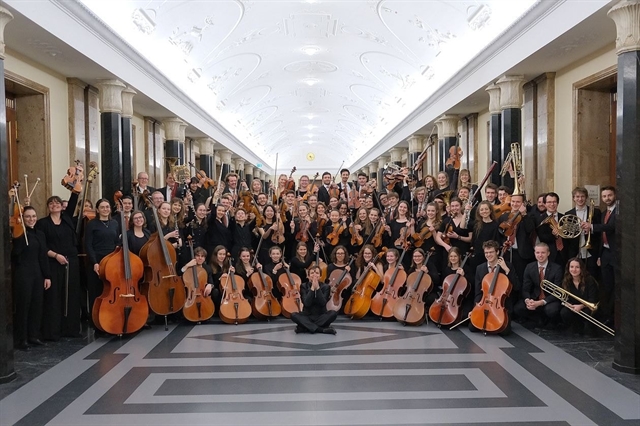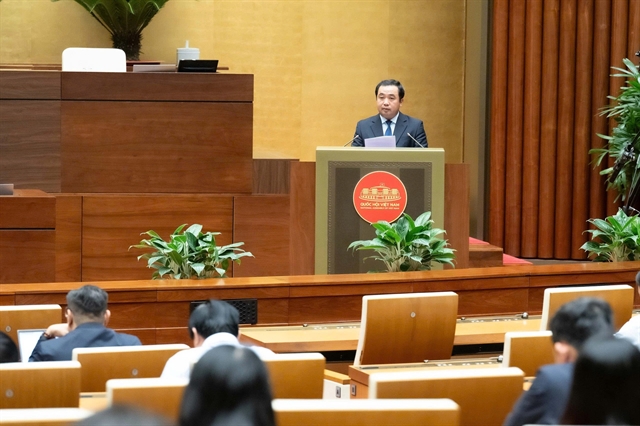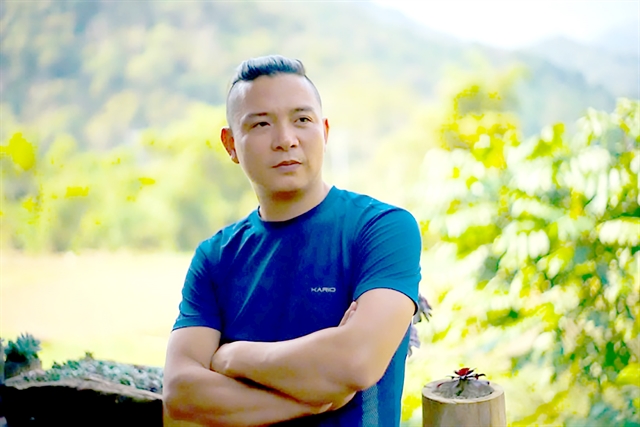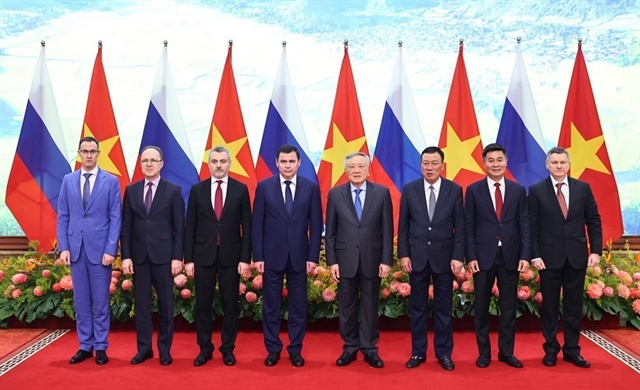 Life & Style
Life & Style

 |
| Artist Nguyễn Quang Sự. Photo nhandan.vn |
Gốm Show – Sound from Ceramics – is an innovative music performance by the Đàn Đó troupe, blending indigenous melodies with instruments crafted entirely from clay.
Ranked among the top two must-see music shows in Hà Nội on Tripadvisor for the past eight weeks, the performance has captivated both local and international audiences. It takes place every Thursday and Friday in the capital, offering a mesmerising fusion of traditional craftsmanship and contemporary sound.
Instrument maker Nguyễn Quang Sự shared insights into his creative process and the troupe’s artistic journey, highlighting the dedication behind each handmade instrument that produces the show’s distinctive tones.
Đàn Đó was established in 2012 and has performed shows like Gốm Show, which gathers pieces of memory from every corner of Việt Nam’s rich cultures.
What does the name Gốm Show mean? Could you tell us how it has been received by audiences?
We are very happy to receive good feedback. Vietnamese and international audiences like the show because of its uniqueness, innovation and attractive sounds. Traditional and Western musicians are also surprised by the instruments played in the show.
'Gốm' means 'pottery,' but it also means 'collect' in the common Vietnamese sense. We want to gather more talented young artists, more indigenous instruments and sounds that bring value to everyone. Above all, we want to connect people who love national culture.
The show is popular for its handmade instruments. Could you tell us about making them?
That was really the turning point of my life. I am a circus artist and had the chance to join the circus show Làng Tôi (My Village). In the show, we had to perform with an original bamboo prop, both juggling and making rhythmic sounds like an instrument. This was the first time I played music.
The Làng Tôi show had a three-year tour in Europe. After that, some of the artists and musicians formed a new troupe with our own path. We researched bamboo to create instruments.
During our research, we found that some regions in Asia have instruments made from the bamboo tubes instead of using metal strings. In Việt Nam, the Chapi instrument of the Raglai people in south-central province of Khánh Hòa is made this way.
Later, we learned that the Khmer group’s Coong Linh instrument is made from the trunk of a tree in the bamboo family. The sound of the Coong Linh is similar to that of a metal gong.
After two years of research, we created the first instrument, named Đàn Đó because its shape resembled a bamboo fish trap. The instrument had no metal strings and was made entirely from bamboo.
At first, we intended to play it with sticks, but we discovered that when played by hand, the sound was airier. From then on, we practised the skill of feeling rhythm and taught ourselves. In that way, we made instruments and practised music.
How did you make the instruments?
At that time, we rented a workshop in the suburbs of Hà Nội. It was large, so we raised chickens there. We bought big earthenware jars to store paddy for feeding them.
We had just created the Đàn Đó instrument but still lacked a bass sound. With the jars and motorcycle inner tubes available, I tried putting the tubes on the jars and beating them. The sound resonated with the deep bass we needed. It was very enjoyable. That was how the Chum drum was made.
With other instruments, we discussed, exchanged ideas and came up with concepts for sound. The most important thing is to experiment yourself to find interesting sounds and unique instruments. I am the person in the troupe responsible for making instruments.
In the shows, each member has a role in working together to create a unified performance. Nguyễn Đức Minh, who has expertise in music, serves as the leader and organiser of the music group. Đinh Anh Tuấn, with his broad perspective, is the one who comes up with ideas, content and stories for the shows.
What difficulties has the troupe encountered?
It is very difficult, but we love our work. Although we have had shows, we only began to earn a small income at the end of 2023. Before that, we were supported by our families.
I remember in the early days we stayed in the workshop, working diligently to create the Đàn Đó. Sometimes, we felt that we were cut off from the world. So far, we have created more than ten percussion and string instruments from bamboo, earth and pottery, with others still being developed.
How does the troupe attract young musicians?
We understand that the troupe needs young musicians with good performance skills and training so that we can continue on a long path.
Working with the troupe, young musicians have a creative environment without constraints. When we plan a show, we almost never have pre-written music. The musicians play together, interacting and communicating through music. During that process, Minh collects beautiful material to create the work.
Therefore, the musicians must play with their souls, not just the notes. They like this creative spirit and have long-term commitment to us.
So it all started when you participated in Làng Tôi. Did the show inspire your music?
Làng Tôi features northern culture. This brought us into contact with ancient traditions that have always been within us.
When we toured the show overseas, we received a warm welcome from audiences. They were moved and some even shed tears. We suddenly realised that Vietnamese culture is incredibly rich. We deeply understood and appreciated traditional culture even more. We found ways to explore it further, contributing to spreading love for traditional culture among audiences. We tell ourselves that if we do it well and with pure hearts, the audience will come to us.– VNS




